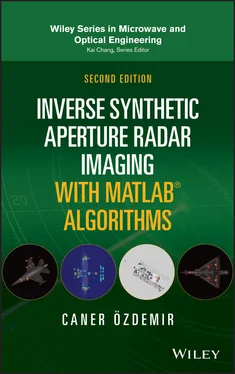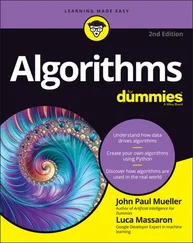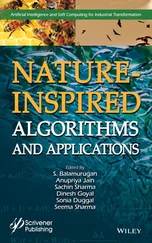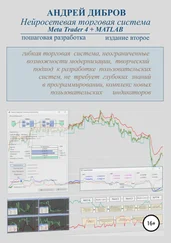Matlab code 1.2 Matlab file “Figure1‐2.m”_________________________________
%-------------------------------------------------------- % This code can be used to generate Figure Figure 1.2%-------------------------------------------------------- % This file requires the following files to be present in the same % directory: % %prince.wav clear all close all % Read the sound signal "prince.wav" [y,Fs] = audioread('prince.wav'); sound(y,Fs); %play the sound N=length(y); t=0:.8/(N-1):.8; %form time vector % FREQUENCY DOMAIN SIGNAL Y=fft(y)/N; % Calculate the spectrum of the signal df=1/(max(t)-min(t)); % Find the resolution in frequency f=0:df:df*(length(t)-1); % Form the frequency vector plot(f(1:2:N)*1e-3,abs(Y(1:(N+1)/2)),'k') %downsample for plotting axis([-1 20 0 .035]) grid minor set(gca,'FontName', 'Arial', 'FontSize',12, 'FontWeight','Bold'); xlabel('frequency, KHz'); ylabel('amplitude'); title('\itfrequency domain signal');
Matlab code 1.3 Matlab file “Figure1‐3.m”_________________________________
%-------------------------------------------------------- % This code can be used to generate Figure 1.3%-------------------------------------------------------- % This file requires the following files to be present in the same % directory: % % prince.wav % matplot.m clear all close all % Read the sound signal "prince.wav" [y,Fs] = audioread('prince.wav'); sound(y,Fs); N = length(y); t = 0:.8/(N-1):.8; %form time vector df = 1/max(t); f = 0:df:df*(length(t)-1); % TIME FREQUENCY PLANE SIGNAL A=spectrogram(y,256,250,400,1e4); % Calculate the spectrogram matplot(t,f*1e-3, (abs(A)),30); % Display the signal in T-F domain colormap(1-gray); % Change the colormap to grayscale grid minor set(gca,'FontName', 'Arial', 'FontSize',12, 'FontWeight','Bold'); xlabel('time, s'); ylabel('Frequency, KHz'); title('\itsignal in time-frequency plane');
Matlab code 1.4 Matlab file “Figure1‐5.m”_________________________________
%-------------------------------------------------------- % This code can be used to generate Figure 1.5%-------------------------------------------------------- % This file requires the following files to be present in the same % directory: % % tot30.mat % stft.m clear close all load tot30; % load the measured scattered field % DEFINITION OF PARAMETERS f = linspace(6,18,251)*1e9; %Form frequency vector BW = 6e9; % Select the frequency window size d = 2e-9; %Select the time delay % DISPLAY THE FIELD IN JFT PLANE [B,T,F] = stft(tot30,f,BW,50,d); xlabel('--->Time (nsec)'); ylabel('--> Freq. (GHz)'); cc = colorbar; tt = title(cc,'dBsm'); tt.Position = [ 8 -15 0 ]; colormap(1-gray) set(gca,'FontName', 'Arial', 'FontSize',12,'FontWeight','Bold'); axis tight; xlabel('time, ns'); ylabel('Frequency, GHz');
Matlab code 1.5 Matlab file “Figure1‐8.m”_________________________________
%-------------------------------------------------------- % This code can be used to generate Figure 1_8 %-------------------------------------------------------- clear all close all %% DEFINE PARAMETERS t = linspace(-50,50,1001); % Form time vector df = 1/(t(2)-t(1)); % Find frequency resolution f = df*linspace(-50,50,1001); % Form frequency vector %% FORM AND PLOT RECTANGULAR WINDOW b(350:650) = ones(1,301); b(1001) = 0; subplot(221); h=area(t,b); grid(gca,'minor') set(gca,'FontName', 'Arial', 'FontSize',12, 'FontWeight','Bold'); xlabel('time, s'); axis([-50 50 0 1.1]) set(h,'FaceColor',[.5 .5 .5]) subplot(222); h=area(f,fftshift(abs(ifft(b)))); grid(gca,'minor') set(gca,'FontName', 'Arial', 'FontSize',12, 'FontWeight','Bold'); xlabel('frequency, Hz') axis([-40 40 0 .35]) set(h,'FaceColor',[.5 .5 .5]) %% FORM AND PLOT HANNING WINDOW bb = b; bb(350:650) = hanning(301)'; subplot(223); h = area(t,bb); grid(gca,'minor') set(gca,'FontName', 'Arial', 'FontSize',12, 'FontWeight','Bold'); xlabel('time, s'); axis([-50 50 0 1.1]) set(h,'FaceColor',[.5 .5 .5]) subplot(224); h = area(f,2*fftshift(abs(ifft(bb)))); grid(gca,'minor') set(gca,'FontName', 'Arial', 'FontSize',12, 'FontWeight','Bold'); xlabel('frequency, Hz') axis([-40 40 0 .35]) set(h,'FaceColor',[.5 .5 .5])
Matlab code 1.6 Matlab file “Figure1‐11.m”________________________________
%-------------------------------------------------------- % This code can be used to generate Figure %-------------------------------------------------------- clear close all % TIME DOMAIN SIGNAL a = 0:.1:1; t = (0:10)*1e-3; stem(t*1e3,a,'k','Linewidth',2);% Figure 1-11 (a) set(gca,'FontName', 'Arial', 'FontSize',12, 'FontWeight','Bold'); xlabel('time, ms'); ylabel('s[n]'); axis([-0.2 10.2 0 1.2]); % FREQUENCY DOMAIN SIGNAL b = fft(a); df = 1./(t(11)-t(1)); f = (0:10)*df; ff = (-5:5)*df; figure; stem(f,abs(b),'k','Linewidth',2); % Figure 1-11 (b) set(gca,'FontName', 'Arial', 'FontSize',12, 'FontWeight','Bold'); xlabel('frequency, Hz') ylabel('S[k]'); axis([-20 1020 0 6.5]); figure; stem(ff,fftshift(abs(b)),'k','Linewidth',2);% Figure 1-11 (c) set(gca,'FontName', 'Arial', 'FontSize',12, 'FontWeight','Bold'); xlabel('frequency, Hz') ylabel('S[k]'); axis([-520 520 0 6.5]);
1 Allen, J. (1977). Short term spectral analysis, synthesis, and modification by discrete Fourier transform. IEEE Transactions on Acoustics, Speech, and Signal Processing 25 (3): 235–238.
2 Brenner, N. and Rader, C. (1976). A new principle for fast Fourier transformation. IEEE Acoustics, Speech & Signal Processing 24: 264–266.
3 Chen, V.C. and Ling, H. (2002). Time‐Frequency Transforms for Radar Imaging and Signal Processing. Norwood, MA: Artech House.
4 Cohen, L. (1989). Time frequency distribution – a review. Proceedings of the IEEE 77 (7): 941–981.
5 Cooley, J.W. and Tukey, J.W. (1965). An algorithm for the machine calculation of complex Fourier series. Mathematics of Computation 19: 297–301.
6 Daniels, R.W. (1974). Approximation Methods for Electronic Filter Design. New York: McGraw‐Hill.
7 Danielson, G. and Lanczos, C. (1942). Some improvements in practical Fourier analysis and their application to X‐ray scattering from liquids. Journal of the Franklin Institute 233 (4): 365.
8 Du, L. and Su, G. (2003). Target number detection based on a order Choi‐Willams distribution. Signal Processing and its Applications, 2003, Proceedings, Seventh International Symposium, Paris, France (1–4 July 2003). vol. 1, pp. 317–320.
9 Duhamel, P. (1990). Algorithms meeting the lower bounds on the multiplicative complexity of length‐2n DFTs and their connection with practical algorithms. IEEE Transactions on Acoustics, Speech, and Signal Processing 38: 1504–1151.
10 Filindras, A., Larsen, U.O., and Ling, H. (1996). Scattering from the EMCC dielectric slabs: simulation and phenomenology interpretation. Journal of the Electromagnetic Waves and Applications 10: 515–535.
11 Fourier, J. (1955). The Analytical Theory of Heat. New York: Dover Publication.
12 Nuttall, A.T. (1988). Wigner distribution function: relation to short‐term spectral estimation, smoothing, and performance in noise, Naval Underwater Systems Center. Technical Report, 8225.
13 Özdemir, C. and Ling, H. (1997). Joint time‐frequency interpretation of scattering phenomenology in dielectric‐coated wires. IEEE Transactions on Antennas and Propagation 45 (8): 1259–1264.
14 Qian, S. and Chen, D. (1996). Joint Time‐Frequency Analysis: Methods and Applications. New Jersey: Prentice Hall.
15 Richmond, J.H. and Newman, E.H. (1976). Dielectric‐coated wire antennas. Radio Science 11: 13–20.
16 Runge, C. (1903). Zeit für Math und Physik 48: 433.
17 Shannon, C.E. (1949). Communication in the presence of noise. Proceedings of the Institute of Radio Engineers 37 (1): 10–21.
Читать дальше












